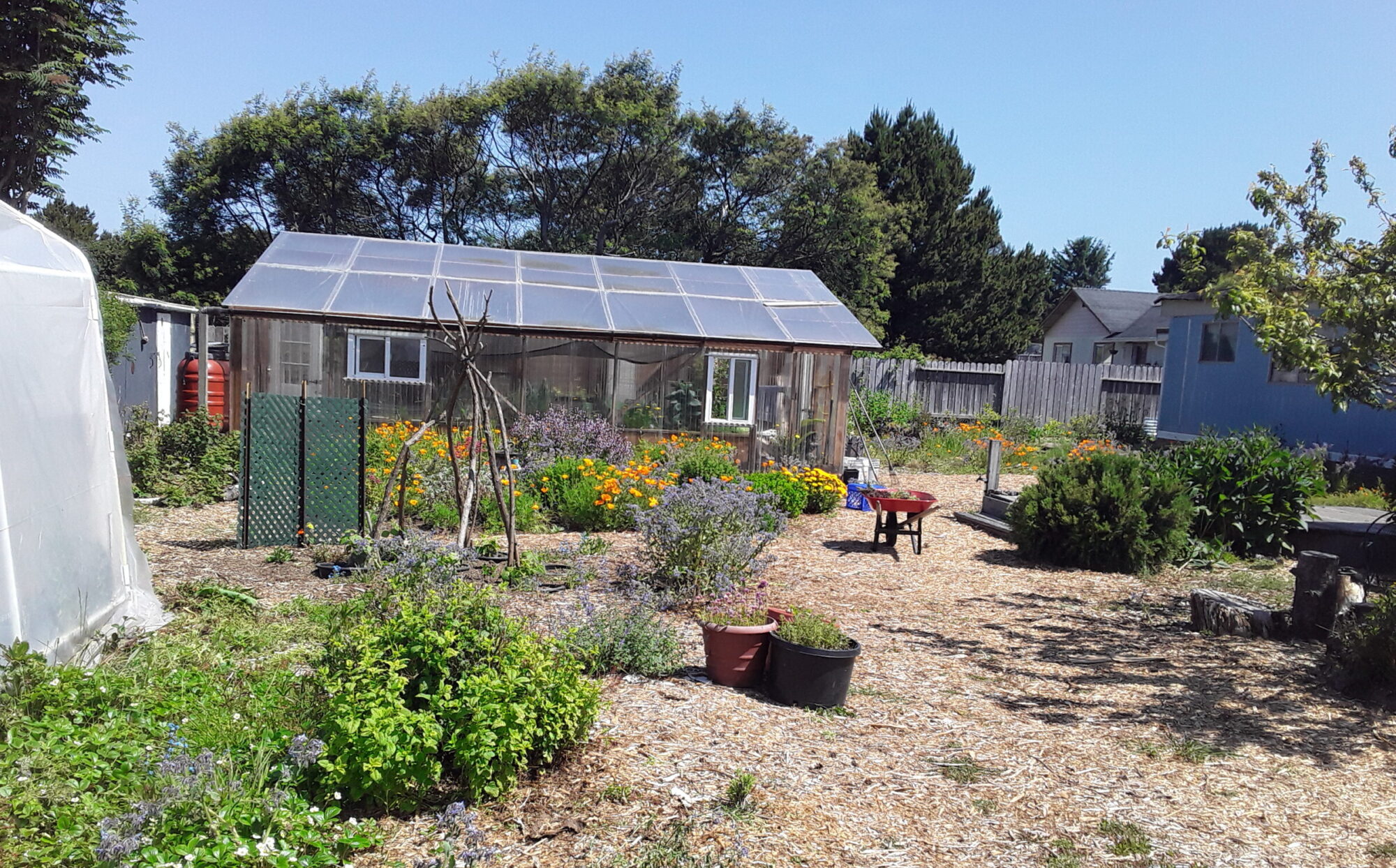
We rolled into Bega, New South Wales, after an all-night bus ride, tired and creased. We stumbled off the bus and were met by a man with light eyes and skin tanned a nut-brown. As we shook hands, I noticed he wore clog-like shoes that separated the big toe from the rest, a Hawaiian-looking print shirt, a floppy leather hat and well-worn pants. His hair was pulled back into a ponytail where it curled pleasantly onto the top of his spine. The man was John Champagne.
Quiet but not unfriendly, I assumed he was sizing us up. And who wouldn’t? What did two middle-aged Americans think they were doing backpacking around the country as if they were in their twenties? I soon learned the man takes in everything.
He drove us out of Bega to his homestead in Brogo, where his mud brick home sat at the bottom of a long winding, unpaved driveway. A vine-covered patio provided shade to the front of the house and the main garden lay just beyond. Some Permaculture homesteads feel way too chaotic for me, but this, this design was practical and beautiful. Twenty years of creative energy had gone into the place and it showed. He explained that he prefered shapes and patterns, rather than rows for his designs and the results were truly stunning.
Champagne emphasized that permaculture is a above all a planning tool, a system whereby one watches, observes and thinks things through before a single clump of soil is turned. Problems arise when people are impatient and plant in haste. He’s even taken the system to nearby Thailand and southeast Asia, where permaculture is recovering the best traditional farming secrets almost lost since the so-called “Green Revolution.”
A small bridge provided access to the main garden, traversing a small mock streambed drainage system. The garden design featured rounded berms, a technique he adopted after abandoning raised beds in order to plant things on the sides. Swales between the berms were not only used for drainage but to collect “chop and drop” clippings which he walked upon, speeding decomposition and ultimately providing mulch.
We saw many wonderful things that day, including John’s fruit and nut orchards and his method for watering a hillside via a small, unlined reservoir at the top of the ridge. The reservoir collected rainwater and slowly drained into the ground, watering the rest of the hillside and effectively eliminating the need for irrigation. In addition, all his trees were planted with comfrey around the base, not only serving to keep out weeds, but provide easy access to mulch.
I witnessed espalier (ess-pal-yaay) pruning for the first time in his netted orchard, where apple trees grew like vines along the side as a space saver. And I saw his gray water system, where water from the kitchen sink is filtered through layers of organic material and a worm farm. The worms eat the food particles and produce castings for compost. The system drains into the ground from a low tech flexible PVC pipe that is bent up to stop the flow and unbent for release.
As we toured Champagne’s 12 acres, Bell Birds whistled their tranquil metallic notes amid an idyllic landscape – some of the most beautiful country I had seen in Australia. Champagne himself hummed a little tune between conversation, running up the scale a few notes and back down again. As time went on, from some wordless place inside, I began to realize his song, simple yet true, came from the land itself.




